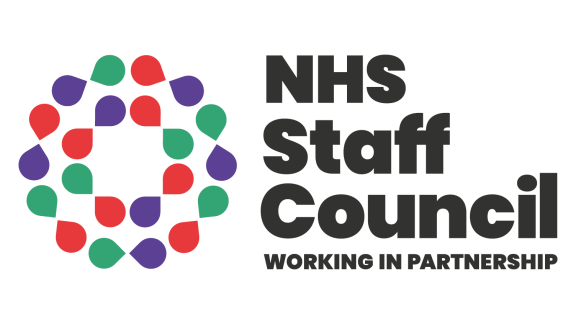Salary sacrifice schemes

What is a salary sacrifice arrangement?
A salary sacrifice arrangement is an agreement between an employer and an employee to reduce an employee's entitlement to cash pay in return for a non-cash benefit.
Examples of this include:
| Childcare vouchers | Cycle to work scheme |
| Car hire/lease scheme | On-site nurseries |
| Car parking* | Gym membership* |
| Home computers* | Pre-paid store cards* |
| Personal learning* | Home electronics/white goods |
* No longer attract tax and national insurance benefits.
Example:
An employee who earns £35,000 per annum joins a Cycle to Work scheme and purchases a bike for £1,000. Over a 12-month period, the employee agrees to sacrifice the £1,000 from their salary and therefore effectively earns £34,000 for the next twelve months so will pay less tax, NI and pension.
More detailed information on salary sacrifice arrangements can be found on the HMRC website.
Interaction between salary sacrifice and the NMW
Salary sacrifice arrangements have the potential to reduce earnings to below National Minimum Wage (NMW). Employers are required to pay important attention to the pay an individual receives once the salary sacrifice arrangements have deducted, to ensure that they remain compliant and don’t breach the NMW regulations.
Salary sacrifice schemes have the potential to reduce staff earnings to below the appropriate minimum income. If staff earn less than the NMW, or NLW for employees over the age of 21, this would mean that as an employer you were non-compliant.
There are a number of penalties that employers could be faced with as a result of being non-compliant including:
- being fined up to £20,000 by HMRC for each non-compliant employee
- being ordered to pay underpayment to current/former workers (dating back up to six years)
- criminal sanctions
- subject to investigation - reports are investigated by the HMRC NLW audit team
- reputational impact – the names of non-compliant organisations can be passed onto the Department for Business and Trade who may put this on a public list.
We have a dedicated web page where you can find out more information about the NMW and its interaction with salary sacrifice schemes and how employers can ensure they calculate NMW correctly.
Cycle to Work scheme
The NHS Net Zero travel and transport strategy outlines that organisations should support staff to shift to less carbon-intensive modes of transportation such as public and active travel. Most NHS organisations offer cycle to work schemes as part of their employee benefits package. The scheme is run via a salary sacrifice arrangement, meaning staff can purchase a bike and/or cycling accessories whilst making tax and National Insurance savings from their gross pay each month. NHS organisations may wish to identify a cycle to work scheme lead so that more staff can make use of this option.
Car hire/lease schemes
Most NHS organisations offer salary sacrifice arrangements for car leasing. This scheme allows staff to hire/lease a brand-new car of their choice on a pre-agreed lease period. Insurance, road tax, MOT, servicing, maintenance and repairs and breakdown assistance are often included within the monthly deductions.
Home electronics/white goods
Technology salary sacrifice schemes allow staff to purchase devices and goods such as:
- computers (tablets, desktops and laptops)
- smart TVs
- mobile phones
- white goods such as fridges, freezers, and washing machines.
The cost of these items are deducted monthly and are spread over a pre-agreed contract length. NHS organisations often partner with a range of external suppliers to provide these benefits for staff.
Tax-free childcare
The government tax-free childcare (TFC) scheme was introduced on 28 April 2017 and will eventually replace employer-supported childcare schemes (ESC). We have put together key information on TFC for employers including how this affects employees in any current ESC schemes operated.
Key facts about TFC
- TFC is administered through online accounts, opened by parents on the GOV.UK website. Parents pay money into the account, which is used to pay for childcare with registered providers. Parents can pay money into their childcare account as and when they like, and other parties can also pay in.
- For every £8 paid in, the government will add £2, up to a maximum of £2,000 government support per child, per year (£4,000 for children with disabilities).
- The scheme is open to parents of children up to and including the age of 11 (12 for children with disabilities). This is lower than current ESC which is available for children up to 15 years of age.
- Employees can get tax-free childcare at the same time as 15 or 30 hours free childcare if they're eligible for both.
The role of employers in TFC
There is no mandated role for employers under TFC, but you may choose to provide information to your employees. This will be a predominantly signposting role, directing employees to the childcare account website and where to register. Employers will not be required to verify identification or eligibility.
Child Benefit: the government also offers parents and carers up to £1,248 a year to help them with the costs of raising their first child, and up to £826.80 for any additional children. You may wish to signpost employees to GOV.UK's online services to check eligibility and make a claim. Families can download the HMRC app for further support.
Parents/carers cannot use tax-free childcare and workplace salary sacrifice schemes, such as childcare vouchers, together. They can choose to remain in their existing ESC arrangement or move to TFC. This decision will depend on which option is best for the their individual circumstances. You may wish to direct your employees to the childcare calculator to help with making this decision.
Employer-supported childcare (ESC)
Employers in the NHS can currently provide ESC through schemes such as childcare vouchers, workplace nurseries and directly contracted childcare.
Childcare vouchers
Workplace salary sacrifice options for childcare vouchers closed to new entrants in October 2018.
Employers offering childcare vouchers through salary sacrifice arrangements can therefore no longer accept new applications to a scheme. Employees who registered for childcare vouchers through their employer before 4 October 2018 can continue to use the scheme as long as the employer continues to offer it and their child remains eligible. Employees are continuing members of a scheme provided they do not have more than 52-consecutive weeks without receiving childcare vouchers.
If an employer received new employees after 4 October 2018 under a business transfer covered by Transfer of Undertakings (Protection of Employment) rules, these employees were entitled to retain their terms and conditions; if they were in a childcare voucher - or directly-contracted childcare scheme before the transfer, they can join your existing scheme, or a new one can be started.
As childcare vouchers are being phased out, you may need to review your flexible working offering and consider what else you could do to support working parents/carers and ensure your total reward offering is still family friendly. You may wish to consider introducing other family friendly benefits into your organisation and you will need to look at the cost implications of offering these. One option may be choosing to pay in to an employee's TFC account, either as an additional payment, or by facilitating payments from their salary. Remember though that any contribution towards TFC from an employee's salary must be from net earnings, therefore, after tax, to avoid them receiving a tax benefit twice.
Workplace nurseries and directly contracted childcare
Employers providing workplace nurseries and directly contracted childcare can continue to do so, and employees will still be able to join a workplace nursery scheme offered by their employer. Given that more employees will be using TFC to pay for their childcare provider, this may impact how your workplace nursery is funded.
Further information
You can find out more about tax-free childcare on the GOV.UK website and on the Childcare Choices government website.
Implications for members of the NHS Pension Scheme
There are some specific implications of entering into a salary sacrifice arrangement for members of the NHS Pension Scheme.
Forgoing a cash benefit for a non-cash benefit reduces the amount of take-home pay. In a career average revalued earnings (CARE) pension scheme, like the 2015 Scheme, pension benefits are built up on a year-by year-basis. Employers should ensure that their salary sacrifice communications clearly explain the impact on an employees’ pension contributions. Any change to a member’s salary in each year (such as salary sacrifice), will have an impact on the individual’s gross pensionable pay.
Entering into a salary sacrifice arrangement that reduces gross pensionable pay will mean that reduced benefits are built up for that period.
In a final salary pension scheme, such as the 1995/2008 scheme, salary sacrifice will not have an impact on the value of the individual's pension benefits if the member opts out of the salary sacrifice arrangement before retirement. However, please note a large increase in pensionable pay before retirement may result in an employer charge under a final pay control.
Employer considerations
Employers may consider several factors before making salary sacrifice arrangements available, including:
- financial considerations such as cost, cost neutrality, or savings
- administration and communication resources
- attraction, recruitment, and retention strategies and how salary sacrifice fits with the overall approach to reward
- legislation, governance, and compliance with tax rules
- whether you need to update your policies and procedures
- what your workforce want, and how this differs between demographics.
Employee considerations
There are number of factors that employees may consider before entering a salary sacrifice arrangement, including:
- cost and length of the arrangement or agreement
- how the arrangement compares with what the individual could buy themselves
- potential savings
- impact on future pension if they are a member of a defined benefit scheme, such as the NHS Pension Scheme
- how vital the arrangement is to the individual being able to work, such as childcare vouchers
- the impact a reduction in salary might have on other general financial matters such as mortgage and credit applications.


